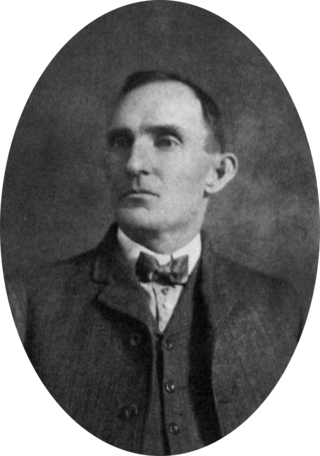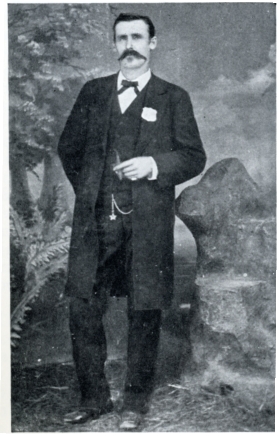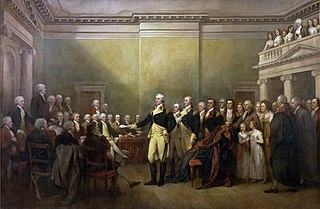
The gunfight at the O.K. Corral was a gunfight that lasted less than a minute between lawmen led by Virgil Earp and members of a loosely organized group of outlaws called the Cowboys that occurred at about 3:00 p.m. on Wednesday, October 26, 1881, in Tombstone, Arizona, United States. It is generally regarded as the most famous gunfight in the history of the American Old West.

James Brown Miller, also known as "Killin' Jim", "Killer Miller" and "Deacon Jim", was an American outlaw and title-holder gunfighter of the American Old West, said to have killed 12 people during gunfights. Miller was referred to by some by the alias "Deacon Jim" because he regularly attended the Methodist Church, and he did not smoke or drink. He was lynched in Ada, Oklahoma, in 1909 along with three other men, by a mob of residents angry that he had assassinated a former deputy U.S. marshal.

The Four Dead in Five Seconds Gunfight was a famous gun fight that occurred on April 14, 1881, on El Paso Street, in El Paso, Texas. Witnesses generally agreed that the incident lasted no more than five seconds after the first gunshot, though a few would insist it was at least ten seconds. Marshal Dallas Stoudenmire accounted for three of the four fatalities with his twin .44 caliber Smith & Wesson revolvers.

WarrenBaxterEarp was an American frontiersman and lawman. He was the youngest of Earp brothers, Wyatt, Morgan, Virgil, James, and Newton Earp. Although he was not present during the Gunfight at the O.K. Corral, after Virgil was maimed in an ambush, Warren joined Wyatt and was in town when Morgan was assassinated. He also helped Wyatt in the hunt for the outlaws they believed responsible. Later in life, Warren developed a reputation as a bully and was killed in an argument in 1900.

Frank C. Stilwell was an outlaw Cowboy who killed at least two men in Cochise County during 1877–82. Both killings were considered to have been self-defense. For four months he was a deputy sheriff in Tombstone, Arizona Territory for Cochise County Sheriff Johnny Behan. Stilwell owned interests in several mines and various businesses, including a saloon, a wholesale liquor business, a stage line, and at his death livery stables in Charleston and Bisbee. He was also a partner in a Bisbee-area saloon with ex-Texas Ranger Pete Spence.

Brooklyn is one of the southernmost neighborhoods in Baltimore, Maryland. It is located near Anne Arundel County along Governor Ritchie Highway which is also Maryland Route 2. Its main roads are South Hanover Street,, Potee Street, and East Patapsco Avenue, Sixth Street, Tenth Street, and West Bay Avenue which borders the neighboring Curtis Bay community to the east, running through Bay Brook Park, which separates the two. South Hanover Street also serves as the dividing line between east–west streets in Brooklyn, as Charles Street does not exist here.
The Reno Gang, also known as the Reno Brothers Gang and The Jackson Thieves, were a group of criminals that operated in the Midwestern United States during and just after the American Civil War. Though short-lived, the gang carried out the first three peacetime train robberies in U.S. history. Most of the stolen money was never recovered.

Tom McLaury was an American outlaw. He and his brother Frank owned a ranch outside Tombstone, Arizona, Arizona Territory during the 1880s. He was a member of a group of outlaws Cowboys and cattle rustlers that had ongoing conflicts with lawmen Wyatt, Virgil, and Morgan Earp. The McLaury brothers repeatedly threatened the Earps because they interfered with the Cowboys' illegal activities. On October 26, 1881, Tom and Frank were both killed in the Gunfight at the O.K. Corral in Tombstone, Arizona Territory. The Tombstone shootout was his only gunfight.

Martin J. "Mart" Duggan was a gunfighter of the American Old West who, although mostly unknown today, was at the time one of the more feared men in the west. He is listed by author Robert K. DeArment, in his book "Deadly Dozen", as one of the most underrated gunmen of the Old West.
Pat Desmond was a lawman and gunman of the American Old West. He was listed as one of the twelve most underestimated gunmen of the Old West in the book "Deadly Dozen", written by Robert K. DeArment.

Then Province of Maryland had been a British / English colony since 1632, when Sir George Calvert, first Baron of Baltimore and Lord Baltimore (1579-1632), received a charter and grant from King Charles I of England and first created a haven for English Roman Catholics in the New World, with his son, Cecilius Calvert (1605-1675), the second Lord Baltimore equipping and sending over the first colonists to the Chesapeake Bay region in March 1634. The first signs of rebellion against the mother country occurred in 1765, when the tax collector Zachariah Hood was injured while landing at the second provincial capital of Annapolis docks, arguably the first violent resistance to British taxation in the colonies. After a decade of bitter argument and internal discord, Maryland declared itself a sovereign state in 1776. The province was one of the Thirteen Colonies of British America to declare independence from Great Britain and joined the others in signing a collective Declaration of Independence that summer in the Second Continental Congress in nearby Philadelphia. Samuel Chase, William Paca, Thomas Stone, and Charles Carroll of Carrollton signed on Maryland's behalf.
Marshall "Eddie" Conway was an American black nationalist who was a leading member of the Baltimore chapter of the Black Panther Party. He was convicted in 1971 for the murder of a police officer a year earlier in a trial with many irregularities. In 2014 he was released on parole after an appellate court ruled that his jury had been given improper instructions.

Wallace Wilkerson was an American stockman who was sentenced to death by the Territory of Utah for the murder of William Baxter. Wilkerson professed his innocence, but chose to die by firing squad over hanging or decapitation. The execution was botched; Wilkerson took up to 27 minutes to die because the firing squad missed his heart.

Cochise County in southeastern Arizona was the scene of a number of violent conflicts in the 19th-century and early 20th-century American Old West, including between white settlers and Apache Indians, between opposing political and economic factions, and between outlaw gangs and local law enforcement. Cochise County was carved off in 1881 from the easternmost portion of Pima County during a formative period in the American Southwest. The era was characterized by rapidly growing boomtowns, the emergence of large-scale farming and ranching interests, lucrative mining operations, and the development of new technologies in railroading and telecommunications. Complicating the situation was staunch resistance to white settlement from local Native American groups, most notably during the Apache Wars, as well as Cochise County's location on the border with Mexico, which not only threatened international conflict but also presented opportunities for criminal smugglers and cattle rustlers.

Feuds in the United States deals with the phenomena of historic blood feuding in the United States. These feuds have been numerous and some became quite vicious. Often, a conflict which may have started out as a rivalry between two individuals or families became further escalated into a clan-wide feud or a range war, involving dozens—or even hundreds—of participants. Below are listed some of the most notable blood feuds in United States history, most of which occurred in the Old West.
George Armwood was an African American who was lynched in Princess Anne, Maryland, on October 18, 1933. His murder was the last recorded lynching in Maryland.
Matthew Williams was a black man lynched by a white mob in Salisbury, Maryland on December 4, 1931.
William Burns was a 22-year-old African-American man who was lynched on October 6, 1907, in Cumberland, Maryland for the alleged murder of white Cumberland police officer August Baker.
David Wyatt was an African-American teacher in Brooklyn, Illinois. In June 1903, Wyatt was denied renewal for his teaching certificate by the district superintendent, Charles Hertel. After hearing about his denial, Wyatt shot Hertel and was immediately arrested. While in jail, a mob captured Wyatt, lynched him in the public square, and set his body on fire.
The hanging of Charles Blackman occurred in Ellaville, Georgia, on January 25, 1889. Stonewall Tondee, a white man, had been murdered on September 5, 1885. Charles Blackman, an African-American man, was tried and convicted for the murder in three trials by all-white, "gentleman" juries. The Georgia Supreme Court twice granted Blackman a new trial, but he was convicted and sentenced to hang a third time in September 1888. Blackman was twice granted respite by Georgia Governor John Brown Gordon after the third trial, which delayed Blackman’s execution by three months. Blackman maintained his innocence until his public execution and insisted that he was never given an impartial trial. 5,000 people from across South Georgia travelled to Ellaville, a town of a few hundreds, to witness the hanging. Telegraph wires were cut to ensure that messages from Governor Gordon and other state officials would not be transmitted and interfere with the hanging.












